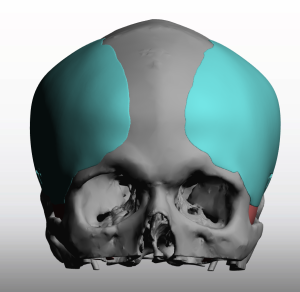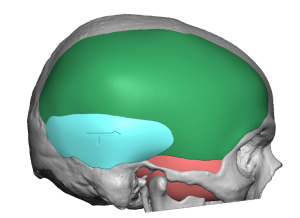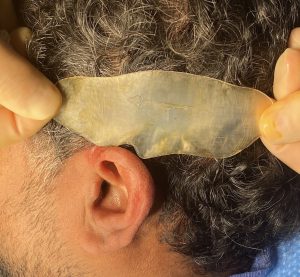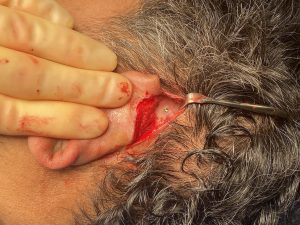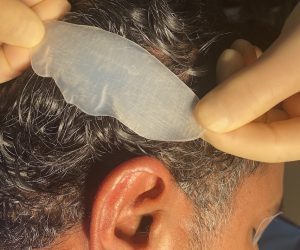Background: In the congenitally narrow head the sides appear not wide enough for the height of the skull. This is most easily seen in the forehead and anterior temporal area which appears ’pinched’ or indented. One’s hair may hide the rest of the narrow side of the head but it usually extends all the way to the back. While the side of the head has a thick muscular layer between it and the overlying scalp (temporalis muscle), the narrowness is primarily caused by the shape of the skull bone as evidenced by the shape of the bony forehead.
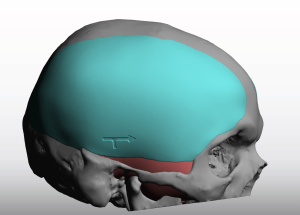
In designing these unique head widening implants the question is how wide (thick) should be and where should the greatest thickness of the implant be. As a general rule I don’t usually make such implants wider than 7mms and that width is usually centered on the side of the head above the ear. This works very well for most patients but, as often happens with many custom implant designs, the patient may discover additional areas on the side of the head that they wish augmented once seeing what the initial implant does.
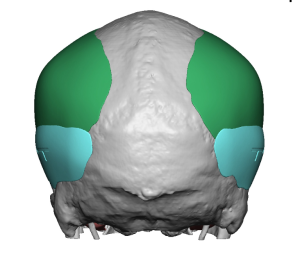
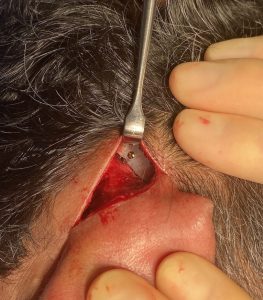
Case Highlights:
1) Widening the entire side of the head can be achieved with a custom skull implant from the forehead to the back of the head.
2) Secondary augmentation of a custom head widening implant can be done by an implant overlay technique.
3) A custom posterior temporal implant overlay can be placed through a postauricular incision. (as was the original head widening implant)
Dr. Barry Eppley
World-Renowned Plastic Surgeon



